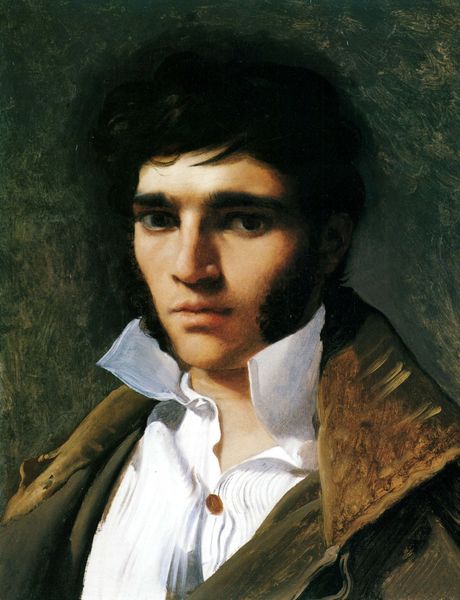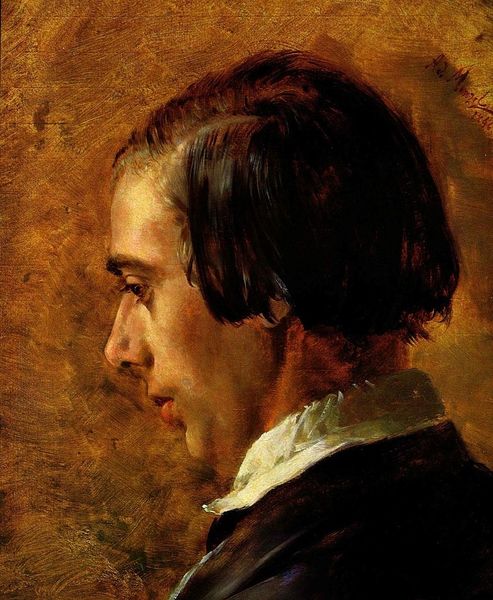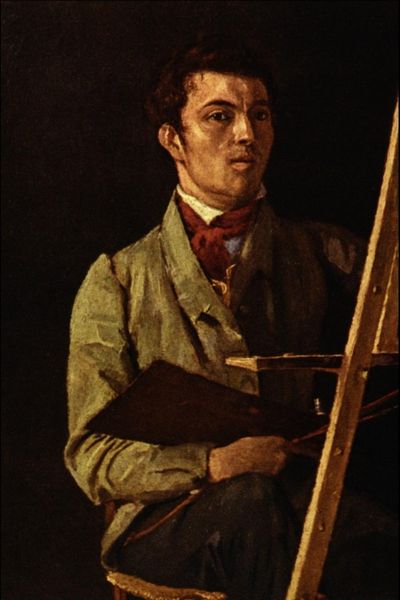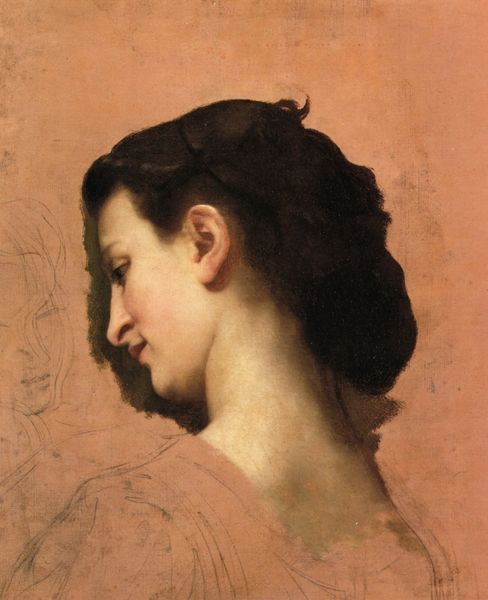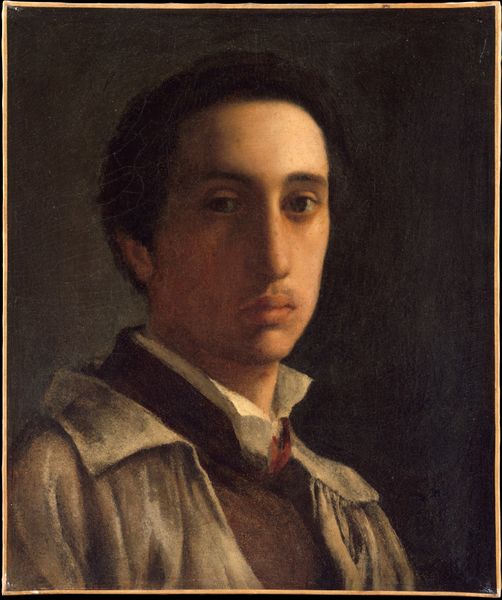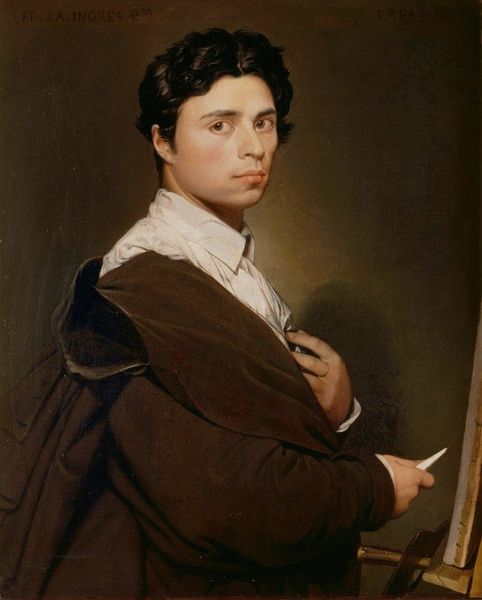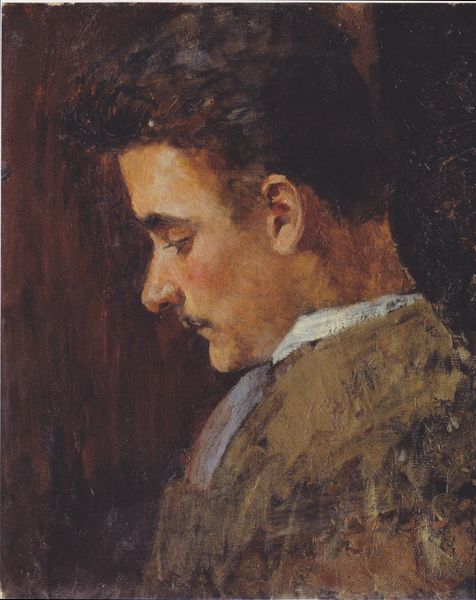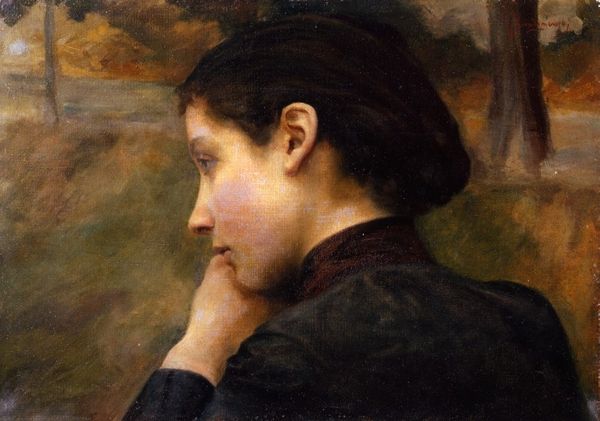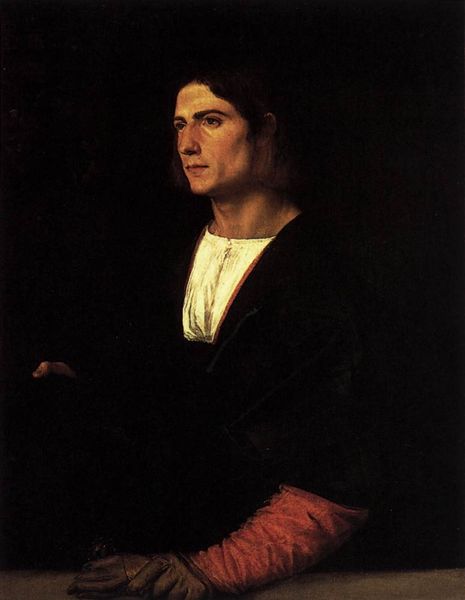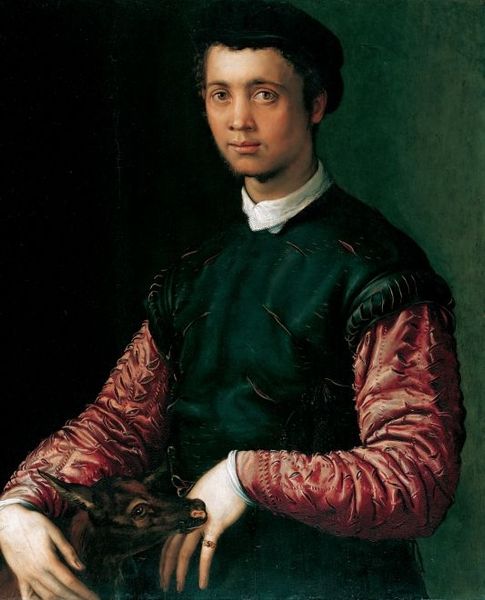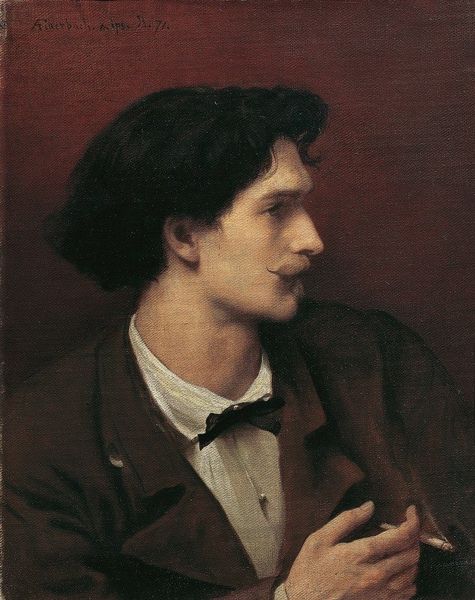
painting, oil-paint
#
portrait
#
painting
#
oil-paint
#
figuration
#
romanticism
#
history-painting
#
academic-art
Dimensions: 63 x 49 cm
Copyright: Public domain
Curator: Oh, he seems lost in thought, gazing into some private horizon. There's a melancholy to him, a quiet fire. Editor: Indeed. What we have here is a portrait of Jean Baptiste Desdeban by Jean-Auguste-Dominique Ingres, completed around 1810. Ingres, deeply rooted in the traditions of Academic art and Romanticism, captures a young man on the cusp, seemingly wrestling with something just out of frame. Curator: "Wrestling" is the perfect word! His hand clutches the lapel of that heavy coat. And is that a tiny, hastily tied cravat? It hints at an untamed spirit beneath a veneer of proper dress. It's incredibly intimate for a portrait, almost voyeuristic. Editor: Absolutely, and this intimacy intersects with specific class and gender expectations of the 19th century. Note how Ingres uses shadow to obscure part of Desdeban's face, positioning him not as a figure of power, but one of potential and interiority. How does this depiction either align with or subvert patriarchal societal constructs? Does the artistic treatment reveal the nuances of a rapidly shifting society at the dawn of a new era? Curator: I'm just fascinated by the texture! The cracking of the oil paint is beautiful, like time itself adding layers to his story. The reddish browns of his hair and coat pull me right in, making him both distant and deeply present. Is it just me, or is there something undeniably romantic about it? Not necessarily "love romantic" but the Romantic era thing. Editor: Absolutely. The choice of oil paint contributes significantly to this. Also, if we see him only as a product of Romanticism we might miss that he also represents the artist's connection to Neoclassical ideals—he aims for idealization, for a certain timeless quality, but the Romantic sensibility disrupts it. Curator: So interesting...Ingres thought he was doing one thing, but we now see this young man differently, more wholly. What do you think he would feel knowing how many strangers now gaze upon him and pick his picture apart? Editor: A valid and humanizing reflection that moves this portrait from an aesthetic study of the past, to a poignant connection with human experience across centuries. Thanks for sharing that.
Comments
No comments
Be the first to comment and join the conversation on the ultimate creative platform.
